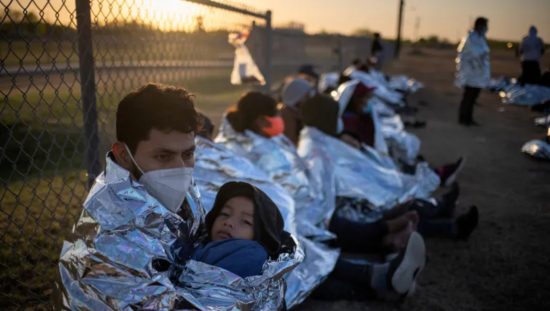Few regimes in international law pack as much of an emotional punch as human trafficking. Whether through its portrayal in various media—including the Taken movies or in the music video for Lady Gaga’s “Bad Romance”—or as championed by various human rights organizations on both the right and left, there is a definite consensus that human trafficking is abhorrent. And why wouldn’t it be? Human trafficking subsists on the systematic removal of autonomy from an individual. Albeit in slightly different iterations, “trafficking in human beings” is one of the earliest examples of international criminal law legislation, with the first international convention to that end instituted in 1913 under the auspices of the League of Nations. The United States itself enacted the Mann Act in 1910 to tackle what it considered to be the trafficking of women and girls. Most recently, the sweeping Palermo Protocol of 2000 sought to create best practices and institutionalize tools to tackle organized criminal activities that result in traffic, the movement of individuals for the end purpose of exploitation. With such universal consensus that traffic – the movement of individuals for the end purpose of exploitation – is an inherent evil that must be abolished, international and national activities against it must surely be robust? Is trafficking not akin to modern-day slavery? Is there even a consensus on the definition of human trafficking?
Disappointingly, there are no clear answers to the above questions, at least not universally. While there is substantial scholarship on human trafficking, trafficking remains intensely elusive to crack down on. There are monumental discrepancies in the number of victims identified worldwide, let alone in the perpetrators of human trafficking.[1][2] Moreover, states are divided in their human trafficking policy priorities regarding human trafficking—policies that are determined by the national definition of trafficking, which in some countries is considered as indistinguishable from sex work. Some states approach human trafficking from a human rights, victim-centered approach; some from a criminal law approach; some from an immigration approach, ignoring the ubiquity of domestic victims of trafficking; some states turn a blind eye to trafficking altogether, and resist opportunities for collaboration with adjacent states.
Over the next few installments, this column seeks to address the aforementioned issues within the international human trafficking regime. It will also look at the history of the concept of human trafficking and some prevalent attitudes towards trafficking, flawed as they are. Most importantly, this column will look at the disputes, uncertainties, and sensationalisms that have permeated the human trafficking agenda. By doing so, I hope to instill the ability to scrutinize and critically appraise news, reports—and the rhetoric therein—regarding human trafficking. Throughout the column, there will be discussions of areas where human trafficking thrives, as well as reasons why instances of sex trafficking are more generally prioritized over labor trafficking. These columns will be citing widely from relevant literature in human trafficking; the literature will be derived from all sides of the debate on human trafficking.
For easy reference, I will adapt the nine human trafficking “situations” as identified by Kragten-Heerdink et al. These nine forms intersect the three forms of human trafficking along with the four routes of human trafficking, and are as follows:
- Sex trafficking: (i) arrived cross-border sex trafficking; (ii) departed cross-border sex trafficking; (iii) domestic sex trafficking; (iv) traversed cross-border sex trafficking
- Labor trafficking: (v) arrived cross-border trafficking for nonsexual exploitation; (vi) departed cross-border trafficking for nonsexual exploitation; (vii) domestic trafficking for nonsexual exploitation; (viii) traversed cross-border trafficking for nonsexual exploitation
- (ix) Trafficking for the purpose of organ removal (which this column will not address due to lack of sufficient information).[3]
The next installment in this column will look at the history of the human trafficking regime, starting with its emotionally-charged beginnings as the White Slave Traffic, and the subsequent legislation that set the tone for anti-human trafficking lobbies even today. The following column will address the question of human trafficking as “Modern-Day Slavery” and the legal, ethical, and rhetorical issues behind that charge.
There is no denying the moral bankruptcy of human trafficking as a crime, nor the gendered implications of sex trafficking, or that there could be some correlation between trafficking and sex work. However, it is incumbent upon laypeople to be informed on such an important matter and to think beyond the image of shattered and battered women in chains, and that any emotions evoked by human trafficking are validated by facts and due scrutiny. It is my hope that this column clears some of the muddied waters of human trafficking discourse, and I welcome the opportunity to engage with readers to that end.
In the interest of full-disclosure, Suzanne Kragten-Heerdink was my supervisor while I was on co-op at the Dutch Rapporteur for Trafficking in Human Beings and Sexual Violence Against Children. This column does not represent the views of the Dutch Rapporteur for Trafficking in Human Beings and Sexual Violence Against Children, nor am I affiliated with the Dutch Rapporteur.
[1] Weitzer, Ronald. “New Directions in Research on Human Trafficking.” Edited by Ronald Weitzer and Sheldon X. Zhang. The ANNALS of the American Academy of Political and Social Science 653, no. 1 (May 2014): 6–24. http://journals.sagepub.com/doi/10.1177/0002716214521562 (accessed January 28, 2018).
[2] Scullion, Dianne. “Assessing the Extent of Human Trafficking: Inherent Difficulties and Gradual Progress.” Social Inclusion 3, no. 1 (February 23, 2015): 22. https://www.mensenhandelweb.nl/system/files/documents/10%20mrt%202016/article%20research.pdf (accessed January 28, 2018).
[3] Kragten-Heerdink, Suzanne L. J., Corinne E. Dettmeijer-Vermeulen, and Dirk J. Korf. “More Than Just ‘Pushing and Pulling’: Conceptualizing Identified Human Trafficking in the Netherlands.” Crime & Delinquency, September 5, 2017. https://doi.org/10.1177/0011128717728503.



